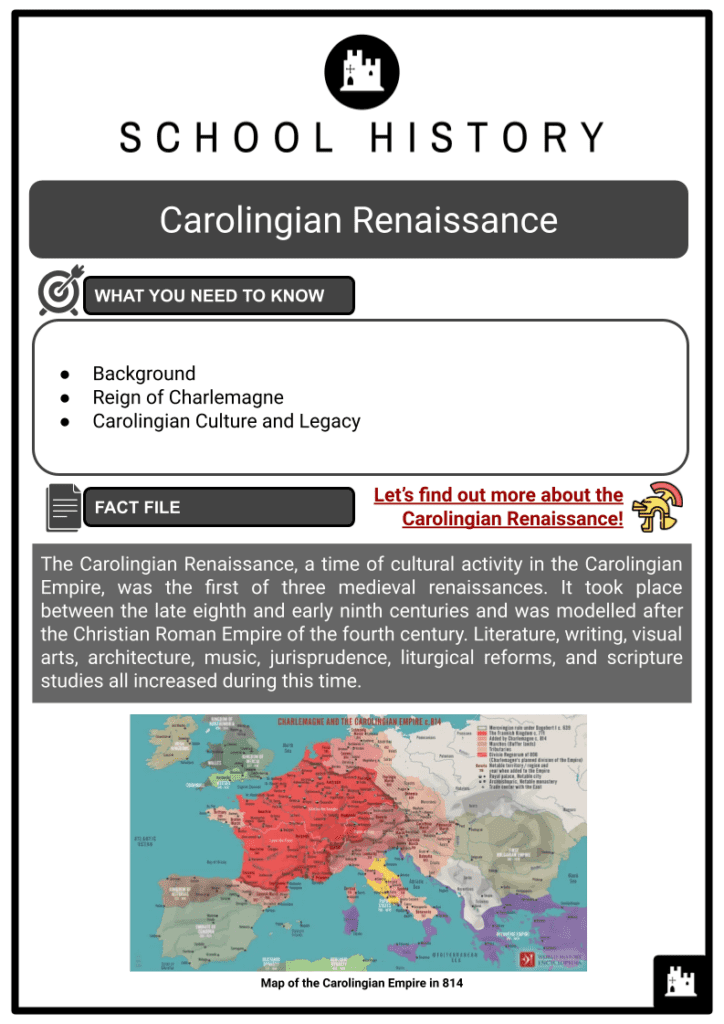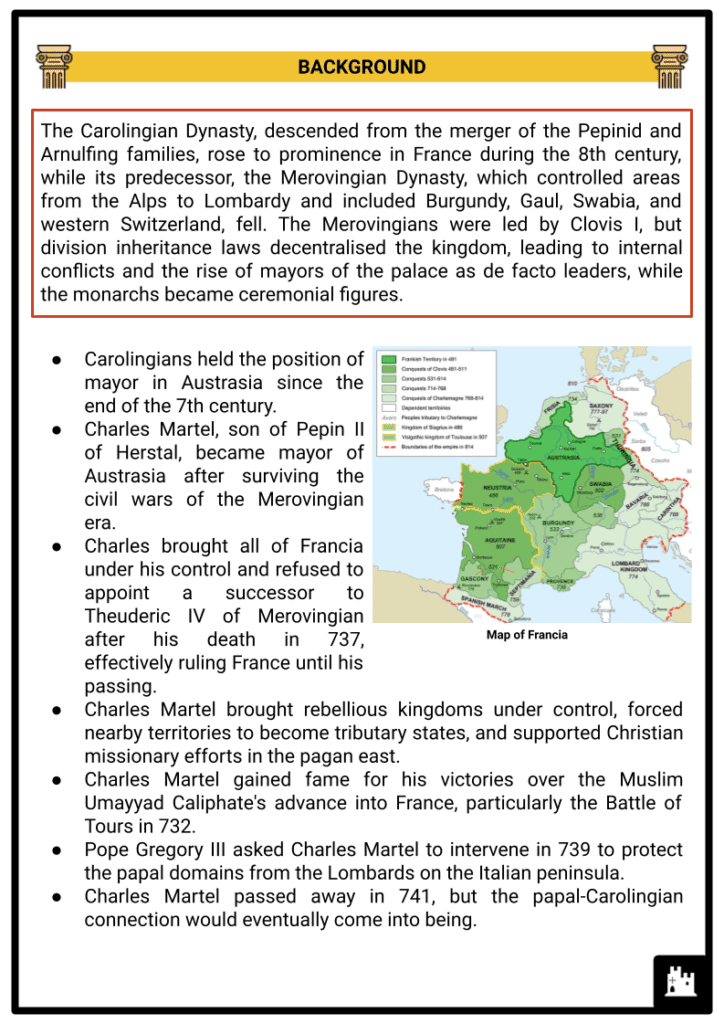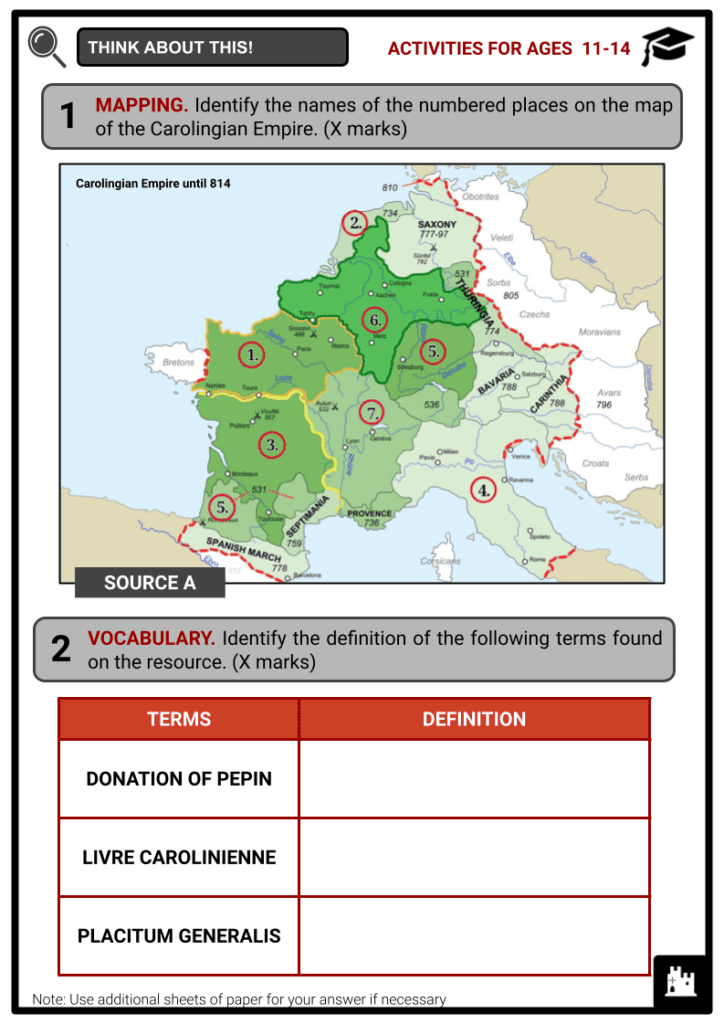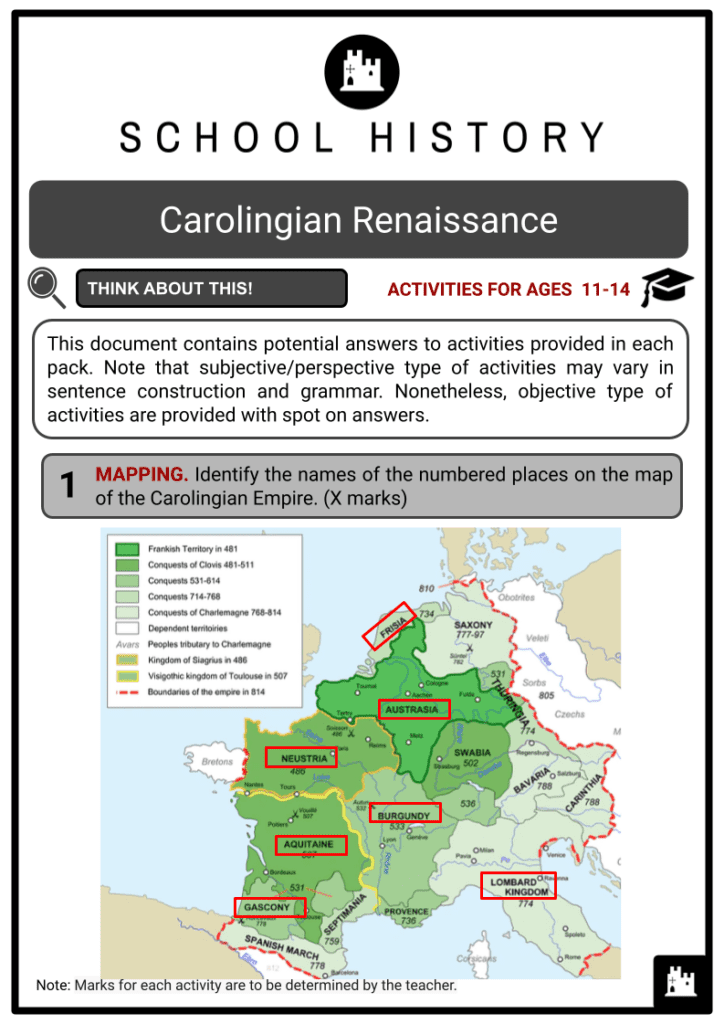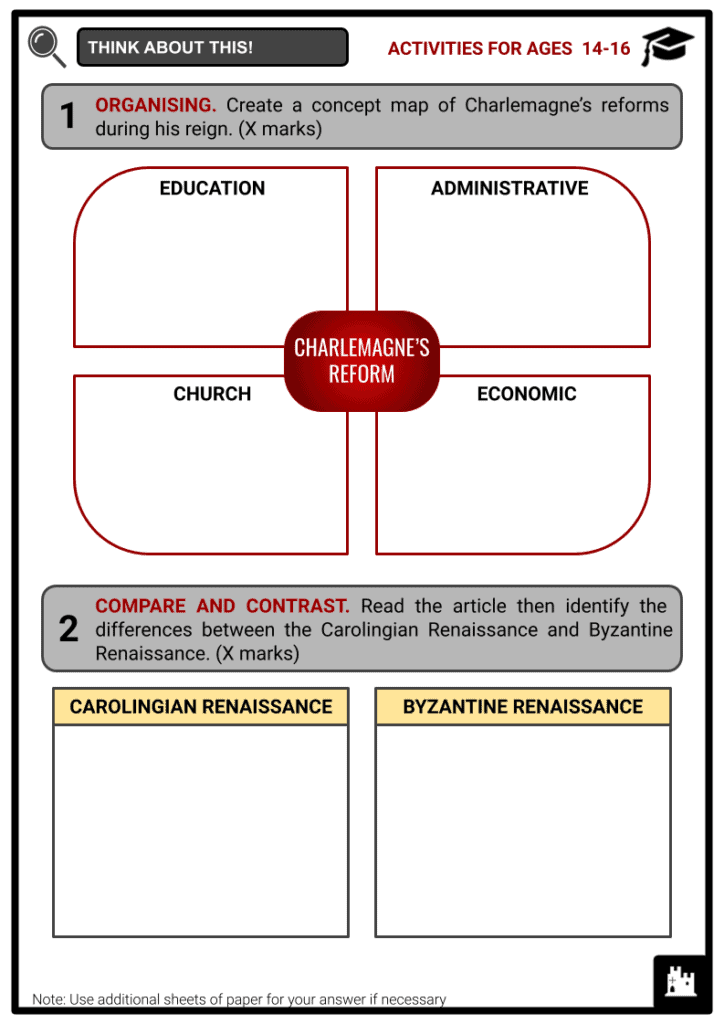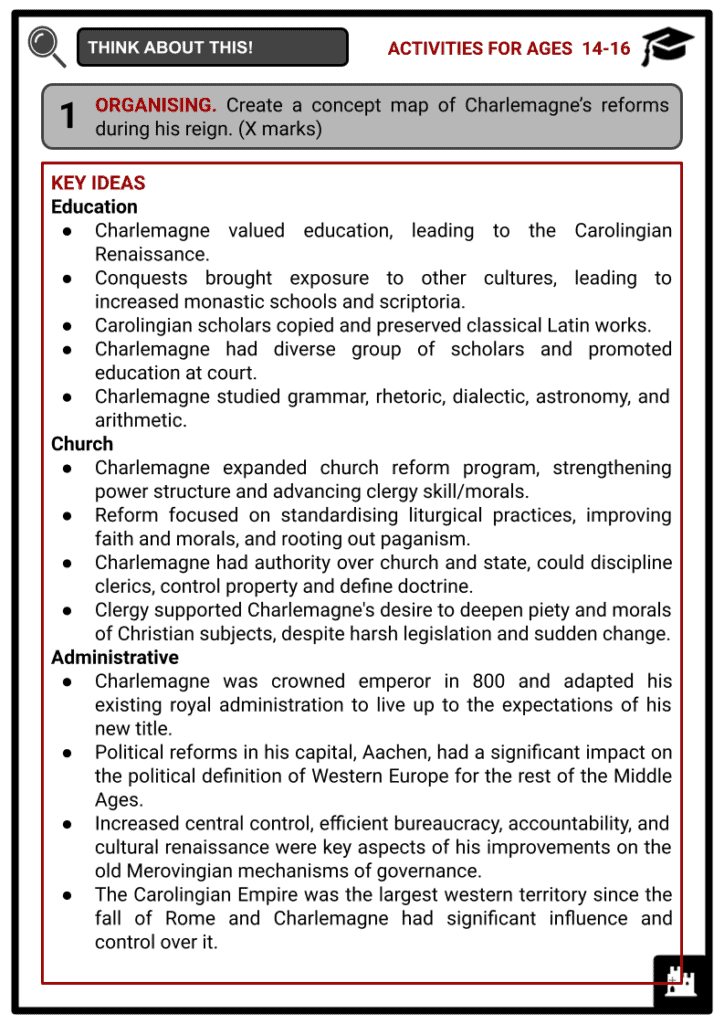Carolingian Renaissance Worksheets
Do you want to save dozens of hours in time? Get your evenings and weekends back? Be able to teach about the Carolingian Renaissance to your students?
Our worksheet bundle includes a fact file and printable worksheets and student activities. Perfect for both the classroom and homeschooling!
Summary
- Background
- Reign of Charlemagne
- Carolingian Culture and Legacy
Key Facts And Information
Let’s find out more about the Carolingian Renaissance!
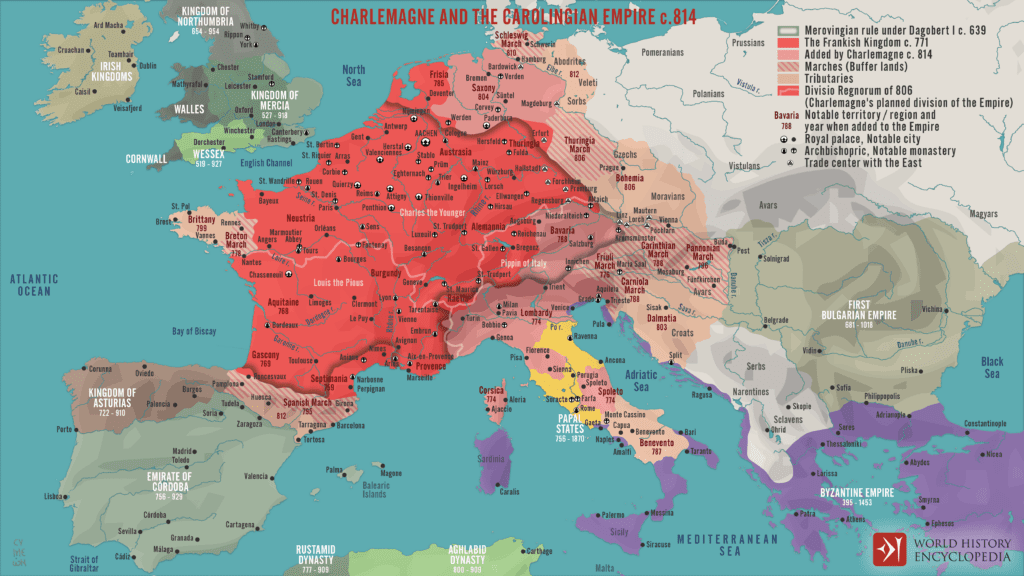
The Carolingian Renaissance, a time of cultural activity in the Carolingian Empire, was the first of three medieval renaissances. It took place between the late eighth and early ninth centuries and was modelled after the Christian Roman Empire of the fourth century. Literature, writing, visual arts, architecture, music, jurisprudence, liturgical reforms, and scripture studies all increased during this time.
BACKGROUND
- The Carolingian Dynasty, descended from the merger of the Pepinid and Arnulfing families, rose to prominence in France during the 8th century, while its predecessor, the Merovingian Dynasty, which controlled areas from the Alps to Lombardy and included Burgundy, Gaul, Swabia, and western Switzerland, fell. The Merovingians were led by Clovis I, but division inheritance laws decentralised the kingdom, leading to internal conflicts and the rise of mayors of the palace as de facto leaders, while the monarchs became ceremonial figures.
- Carolingians held the position of mayor in Austrasia since the end of the 7th century.
- Charles Martel, son of Pepin II of Herstal, became mayor of Austrasia after surviving the civil wars of the Merovingian era.
- Charles brought all of Francia under his control and refused to appoint a successor to Theuderic IV of Merovingian after his death in 737, effectively ruling France until his passing.
- Charles Martel brought rebellious kingdoms under control, forced nearby territories to become tributary states, and supported Christian missionary efforts in the pagan east.
- Charles Martel gained fame for his victories over the Muslim Umayyad Caliphate's advance into France, particularly the Battle of Tours in 732.
- Pope Gregory III asked Charles Martel to intervene in 739 to protect the papal domains from the Lombards on the Italian peninsula.
- Charles Martel passed away in 741, but the papal-Carolingian connection would eventually come into being.
- Charles' sons Pepin the Short and Carloman, who abdicated in 747, received the mayorcy of Francia after his death. The brothers restored the Merovingian monarchy and installed Childeric III as their puppet king in order to ensure stability under their authority. Pepin the Short, sometimes known as Pepin III or Pippin III, overthrew Childeric in 751 and ascended to the throne in his place. After the Merovingians were formally driven from power and the Carolingian Dynasty was given legal standing, Pepin was anointed by Pope Zachary as the first Carolingian King of the Franks.
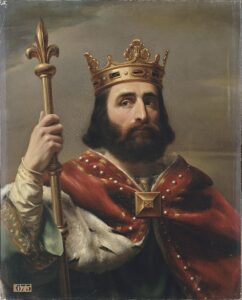
Pepin the Short - Pepin made use of his new position to increase the Frankish kingdom's sway over Europe. At Pope Stephen II's request, he helped in the Lombard invasion of papal territory in 754, helping the Franks defeat the Lombards and take control of the province of Ravenna, which Pepin subsequently gave to the pope. The Papal States were founded as a result of this transaction, which came to be known as the Donation of Pepin, and it backed upcoming papal claims to secular supremacy.
REIGN OF CHARLEMAGNE
- The first of the Carolingian rulers was Pepin the Short, but it was his son Charlemagne who elevated the dynasty to legendary status. From his capital at Aachen in Austria, Charlemagne ruled alongside his brother Carloman I as co-king, but the siblings' poor relationship kept them at odds until Carloman died in 771. Charlemagne was known for his military leadership, pagan intolerance, and aggressive expansionism. After the death of his father, Charlemagne reigned as King of the Franks and as Holy Roman Emperor following his coronation by Pope Leo III. The Frankish church and nobles then supported Charlemagne's authority as a sole ruler.
- Charlemagne distinguished himself as emperor by enacting several monetary, administrative, military, cultural, and religious reforms. The first of three mediaeval renaissances, the "Carolingian Renaissance," was primarily founded and supported by him. The Carolingian Empire saw a period of cultural activity between the late eighth and the ninth centuries that was influenced by the Christian Roman Empire of the fourth century. The fields of literature, writing, the arts, architecture, law, liturgical reform, and scripture study all advanced during this time.
- Because of his respect for knowledge and education, Charlemagne was successful as a warrior, administrator, and emperor. His reign marked the beginning of the Carolingian Renaissance, which was known for its flourishing in science, literature, the arts, and building. With his extensive conquests, Charlemagne was able to learn about the customs and knowledge of other nations, particularly those of Moorish Spain, Anglo-Saxon England, and Lombard Italy. He also significantly increased the number of monastic schools and scriptoria (centres for book copying) in France.
- Carolingian scholars copied and preserved many classical Latin texts that still exist today; Carolingian manuscripts are among the earliest versions of these texts. Charlemagne was an advocate of education and fostered the liberal arts at his court, even studying himself. He had scholars of different European origins working for him like Alcuin, Theodulf, Paul the Deacon, Peter of Pisa, Paulinus of Aquileia, Angilbert, Angilram, Einhard, and Waldo of Reichenau.
- Despite his support for education, Charlemagne had difficulty with writing, which was considered his worst academic weakness by Einhard. He attempted to improve this later in life but with little success, practicing writing in his free time using books and wax tablets hidden under his pillow. The ability of Charlemagne to read is uncertain as there is no contemporary source that support it.
- The near economic future of Europe was significantly influenced by Charlemagne. Following his father's reforms, Charlemagne did away with the gold sou-based monetary system and adopted Pepin's method together with the Anglo-Saxon King of Mercia, Offa. Strongly practical justifications existed for abandoning the gold standard, chief among them being the scarcity of the metal.
- The gold crisis in Charlemagne's reign was caused by the peace treaty with Byzantium, which resulted in the loss of commercial routes to Africa and the cession of Venice and Sicily to the East. Charlemagne standardised and united the currency system to facilitate trade and commerce. He created the livre carolinienne, which was based on a pound of silver and served as both a measure of weight and money. He also established accounting standards with the Capitulare de villis of 802, which set guidelines for recording incomes and expenses.
- Charlemagne initially gave Jews a monopoly on money lending but later outlawed it through the Capitulary for the Jews in 814.
- He carried out a number of microeconomic changes such as direct price regulation and tolls on certain goods and commodities.
- His policy towards Jews changed over the course of his lifetime.
- Charlemagne engaged at least one Jew for his diplomatic missions and his personal physician was Jewish.
- His attitude towards Jews were generally progressive and he invited them to live in his kingdom for economic reasons.
- In contrast to his uncle Carloman and father Pepin, Charlemagne increased the church's reform agenda. Later, the development of the spiritual life was seen as being crucial to governing the state and the monarchy. His reform centred on enhancing the clergy's moral and intellectual standing, standardising liturgical procedures, enhancing the fundamental principles of the Christian religion, and eradicating paganism.
- His power now extended to both the church and the state; he could punish clergy, manage religious assets, and specify what orthodox theology was. He had acquired a strong base of support among the clergy, who approved of his intention to strengthen the piety and morality of his Christian people, despite the severe regulations and unexpected shift.
- Charlemagne made significant changes to his royal administration after being crowned emperor in 800, which greatly influenced the political definition of Western Europe for the rest of the Middle Ages. His capital city of Aachen was the center of these changes, which included a stronger central control, effective administration, accountability, and cultural revival.
- He had the authority to rule and command under the law in all of his lands, oversaw all judicial proceedings, passed laws, commanded the army, and protected the underprivileged and the church. He also changed the local court system in 780 by instituting the scabini, legal professionals, and all laws were codified and changed in 802.
- Charlemagne split the Frankish realm into three regions: Austrasia, Neustria, and Burgandy, which were the central "core" of the kingdom and directly under the control of the itinerant family and the missatica system.
- Beyond the regna, where Frankish governance was based on the counts, were the marcher regions, which were governed by strong governors.
- He established two minor kingdoms, Louis and Pepin, in Aquitaine and Italy.
- Gerold served as an independent governor of Bavaria until his passing in 796.
- These regions and kingdoms still under the general rule of Charlemagne but enjoyed a good amount of independence with their own chancery and mint.
- Every year (between March and May), the Placitum Generalis or Marchfield was held at a location designated by the king. It was summoned for three reasons: to assemble the Frankish host for a campaign, to deliberate and pass legislation on political and religious issues affecting the realm, and to pass judgement. It was a crucial opportunity for Charlemagne to declare his intentions because all significant men were required to attend the gathering. The gathering started off successfully, but as time went on, it only served as a platform for debate for aristocrats to air their grievances.
CAROLINGIAN CULTURE AND LEGACY
- The Carolingian divisions of 843, 855, and 887 are seen as the origins of contemporary European nations. These divisions resulted in the creation of several kingdoms and put each province on its own developmental path. The fall of the Carolingians led to the continuation of Frankish aristocrats governing in West Francia, while the Saxons took over the eastern realm, leading to the distinction between French and German entities. The restoration of the imperial title in 962 by Otto I, a Saxon, is also seen as the beginning of Germany. However, Italy continued to be fought over for several more centuries even though it was still a part of the Holy Roman Empire.
- The art of the Carolingians is generally dated to the years 800-900. Despite being a relatively brief period of time, it was a significant era in the history of art in Europe. For the first time, Northern Europe adopted traditional Mediterranean Roman art styles, paving the way for the development of Romanesque and ultimately Gothic art in the West. This was a significant development as it marked a departure from the preceding period of art, which was largely dominated by Germanic and Celtic styles.
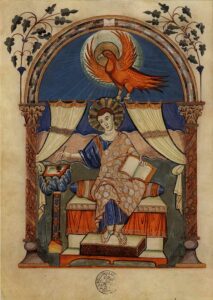
Lorsch Gospels - Illuminated manuscripts: These are books or texts that have been decorated with intricate drawings and illustrations, often using gold leaf or other precious metals. Carolingian illuminated manuscripts are known for their skillful use of colour and Christian iconography. Examples include the Godescalc Evangelistary and the Utrecht Psalter.
- Metalwork: Carolingian metalworkers produced a wide range of objects, including jewelry, church vessels, and reliquaries. These pieces are known for their intricate designs and the skillful use of precious metals. Examples include the Basse-Yutz Flagons and the Holy Thorn Reliquary.
- Miniature sculpture: Carolingian miniature sculpture includes small figurines and other decorative objects, often made of metal. These pieces are known for their attention to detail and the skillful use of materials. Examples include the Goldsmith's Treasure and the Lothair Crystal.
- Mosaics: While not as common as other forms of Carolingian art, mosaics from this period have been preserved and are notable for their use of vibrant colours and Christian themes. Examples include the Aachen Cathedral mosaics and the Palatine Chapel mosaics.
- Frescoes: Frescoes are paintings that are created on wet plaster, allowing the pigments to become a part of the plaster. Carolingian frescoes are known for their use of Christian iconography and vibrant colours. Examples include the frescoes at the Palace Chapel of Ingelheim.
- Overall, the art of the Carolingians was an important step in the development of Western art and continues to be studied and admired to this day.
- Carolingian architecture was characterised by its use of rounded arches, barrel vaults, and groin vaults, which were often used in combination. The use of these architectural elements was intended to create a sense of grandeur and majesty in the buildings. Additionally, Carolingian architecture was known for its use of ornate decoration, including intricate geometric patterns, figurative sculptures, and the use of brightly coloured mosaics and frescoes.
- One of the most notable examples of Carolingian architecture is the Palatine Chapel in Aachen, Germany.
- Commissioned by Charlemagne himself, the chapel is a masterful example of the Carolingian architectural style, with its use of rounded arches, barrel vaults, and groin vaults, as well as its intricate decoration and use of mosaics and frescoes.
- Other notable examples of Carolingian architecture include the Basilica of St. Servatius in Maastricht, Netherlands, and the Church of St. Cyriacus in Germigny-des-Prés, France.
- Overall, the architectural design favoured by Charlemagne during the Carolingian period had a lasting impact on the development of Western architecture and continues to be studied and admired to this day.

